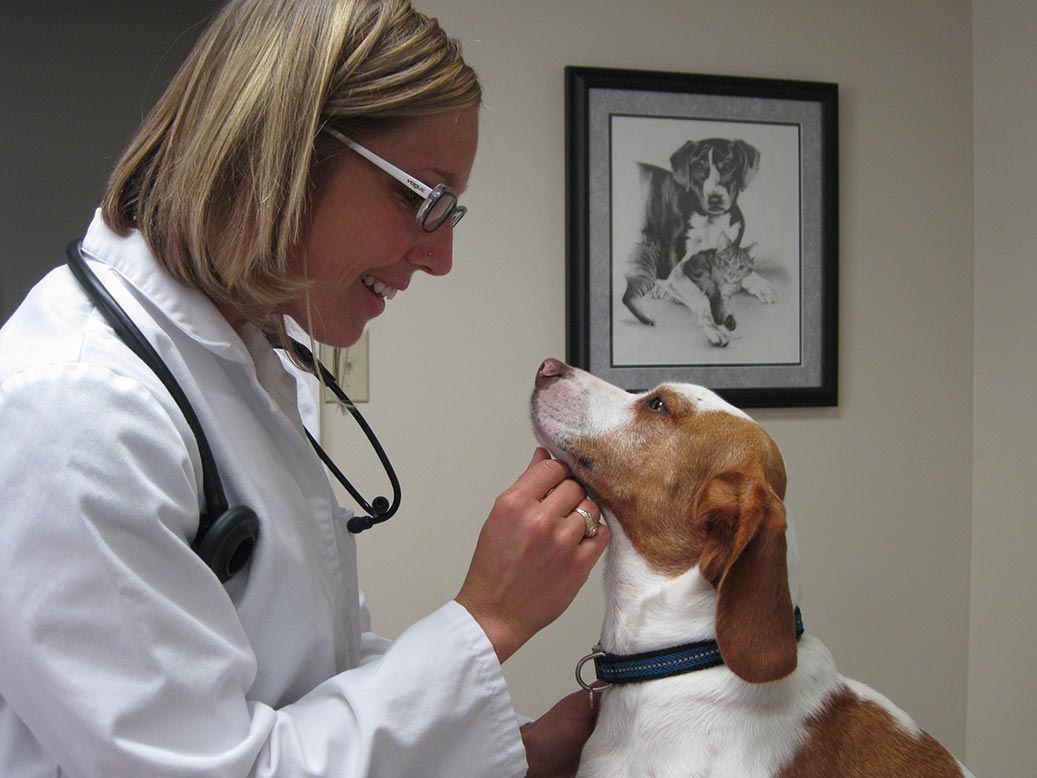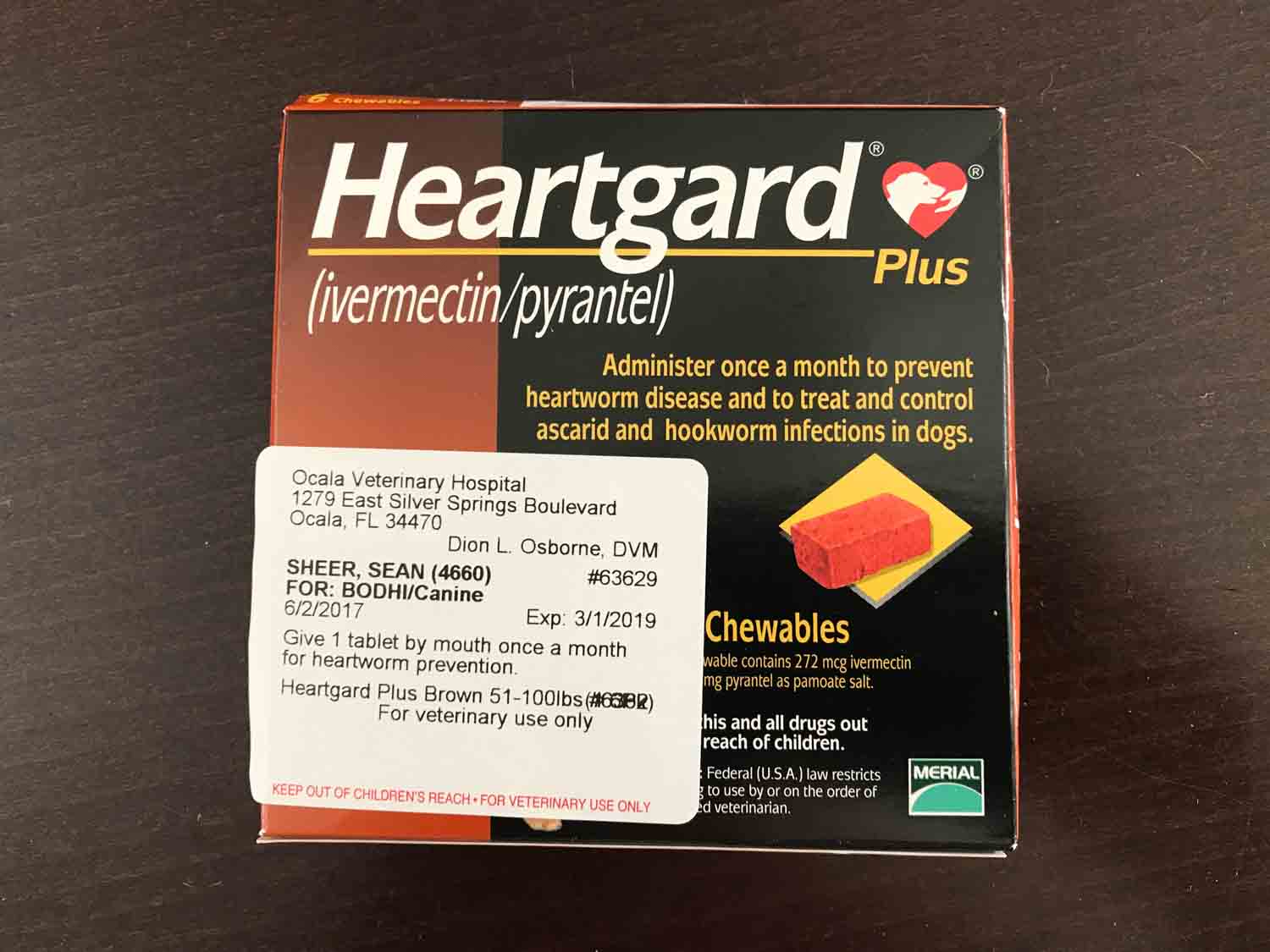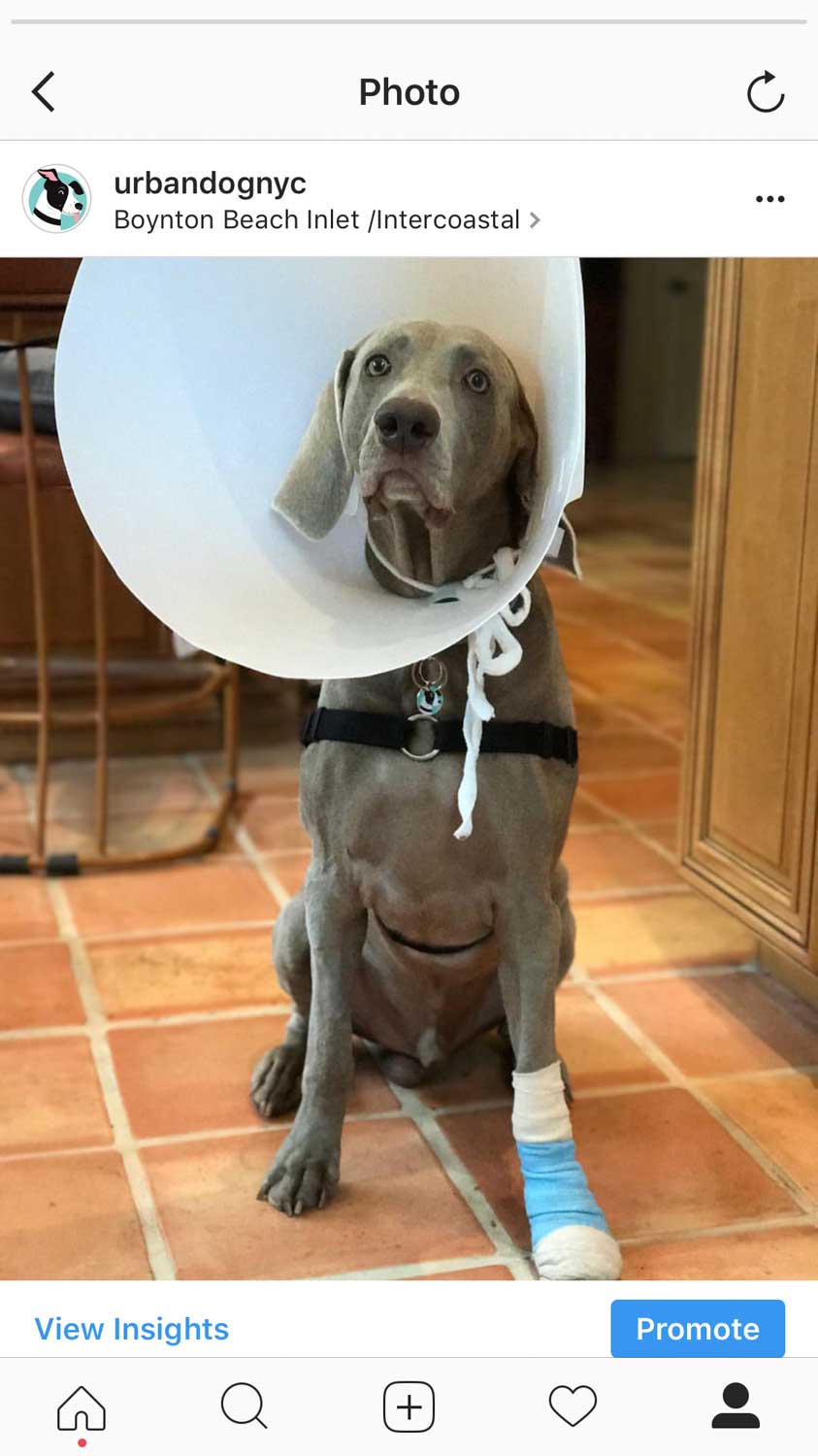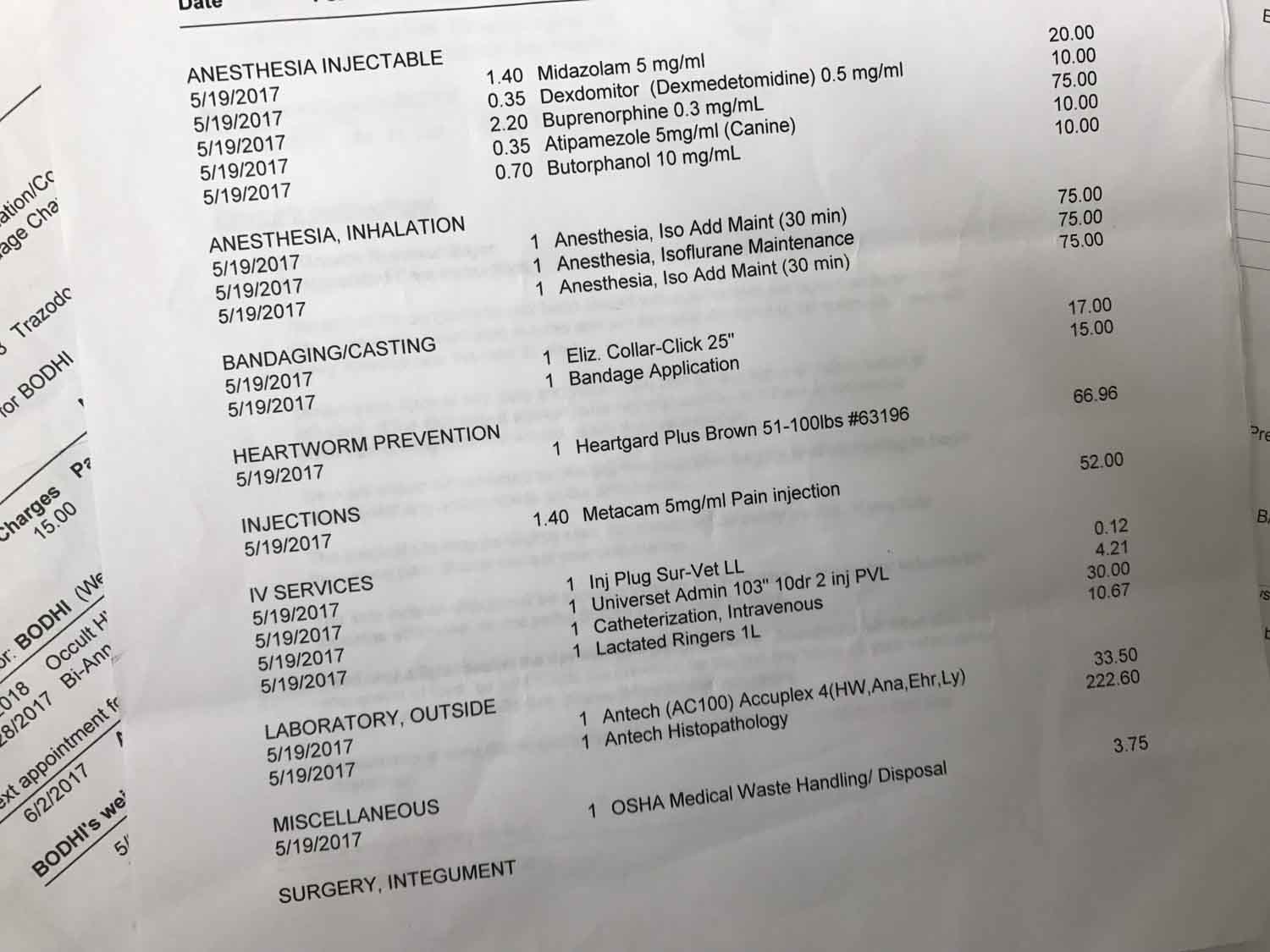Five Questions for Dr. Moore
Veterinary Care Costs
It’s time for another edition of Five Questions for Dr. Moore. It’s been awhile since we last chatted. Since our last interview, Urban Dog relocated to Miami Beach and Dr. Christina Moore moved to to Austin, Texas. But that’s not stopping us from discussing the issues that are important to you and your dog. Recently Urban Dog’s spokes-dog, Bodhi, had an interdigital cyst removed from his foot. That bill brings his life-time medical bills to about $10,000! We also recently published an essay by Mary Little, How Much is Too Much, in which she discusses one of her dog’s medical bills, which topped $30,000. Both Mary’s and my family were lucky that we had the resources to cover those costs. But not everybody does. We sat down with Christina to chat about strategies to help keep veterinary care costs manageable.

Urban Dog: What do you think is the first line of defense against large medical bills for dog owners?
Dr. Moore: Preventive medical care is probably most important. People often pay big vet bills or emergency room bills for things that could have been prevented. The company I work for, Thrive, is looking at ways to provide high quality, affordable preventative care. We believe it’s important to have a general practitioner veterinarian that you trust to recommend all of the important preventative care you need for your pet, without going overboard. You should see this vet on an annual basis for all of the vaccines, flea and tick preventatives, heart worm preventatives, and annual blood work to monitor anything that might be going awry. That alone is going to help you keep watch over your pet’s health and potentially keep costs down. A good example is heart worm. It’s very costly and very scary to treat, but easily prevented if you keep your dog on heart worm preventatives all his life.

Urban Dog: It’s my understanding that most people don’t take their pets in for routine care. Do you have any thoughts about how to get people to see their vets?
Dr. Moore: Thrive is trying to disrupt the status quo in the veterinary industry for pet parents. We’re trying to break down the barriers to entry for clients. We have ten dollar exams. It doesn’t matter what the exam is for, whether it’s a first exam or a sixth exam, all exams are ten dollars. That’s huge because very often a client comes in with one hundred dollars or less to spend and if you spend half of that or more on just the exam, then the veterinarian’s hands are tied in terms of the preventative care or treatment plan they can do. In addition to the low exam fees we also have vaccine packages. So we’re really trying to make the high quality preventive care affordable. It’s our number one goal.

Urban Dog: What else can vets and patients to do get a better handle on veterinary care costs?
Dr Moore: Another thing that is important is for vets for really communicate well with their clients. They need to explain the value behind the cost of the treatment they are providing. Costs can vary so much from vet-to-vet. Clients need explanations. How is an owner going to see value in a visit if the vet doesn’t explain the value of treatment? Vets and the veterinary team need to explain upfront what they’re going to do and what it’s going to cost. They need to tell the owner that this is what we’re going to do and why. So there are no surprises when they check out. For clients who are value conscious or simply concerned about how much they are spending, they want to know the value of what they’re getting. And on the client side, they need to be more proactive about getting explanations about what they are about to spend. If you get a a list of what is going to be done then you can more informed decisions about treatment or procedures that may or may not be necessary at a given time.

Urban Dog: What about pet insurance? It’s my understanding that only a little more than a million people in the United States have pet insurance. If I’m not mistaken, there are about 80-million dogs alone that are pets in the US!
Dr. Moore: Pet insurance is definitely an important option. But you need to be careful because pet insurance can sometimes be tricky and difficult to navigate, especially when it comes to pre-existing conditions and claims being denied. Make sure you do a lot of research and look at lots of client reviews. Choose an insurance company that is going to work with you, cover a lot of things, and not let you down when you need them most.
Urban Dog: I recently visited North Shore Animal League America’s campus out on Long Island. They have a low cost clinic there. Is that type of care prevalent?
Dr. Moore: Places like North Shore Animal League America on Long Island and the SPCA here in Texas have established veterinary practices that offer full spectrum medicine at a discounted rate that people of limited means can take advantage of. But I think it’s a double-edged sword. There are so many animals that are truly in need, like animals that are in need of surgery that costs five thousand dollars and can completely treat the pet, but the owner has no money, then that’s a good time to take the pet to a place like that. But what becomes hard for me is when clients who can afford the care come to places like the ones we’re talking about to get care.

Urban Dog: Let’s finish with the cost of drugs. Prescription drugs for pets can be really expensive. Are there ways to get cheaper drugs for your dog?
Dr. Moore: There are certainly some medications that you’re giving your pet that humans can take. If that’s the case, have your vet figure out the correct dose, call it in, and get the human generic version of the drug. It’s definitely worth asking your vet about this. But for things like flea, tick, and heart worm prevention, you definitely need to get those drugs through your vet, because they’re actually guaranteed if you get them through your vet. Don’t get them from online services, because then the guarantee is void and you also aren’t even assured you’re going to get the dose you want or even the drug you are ordering!






